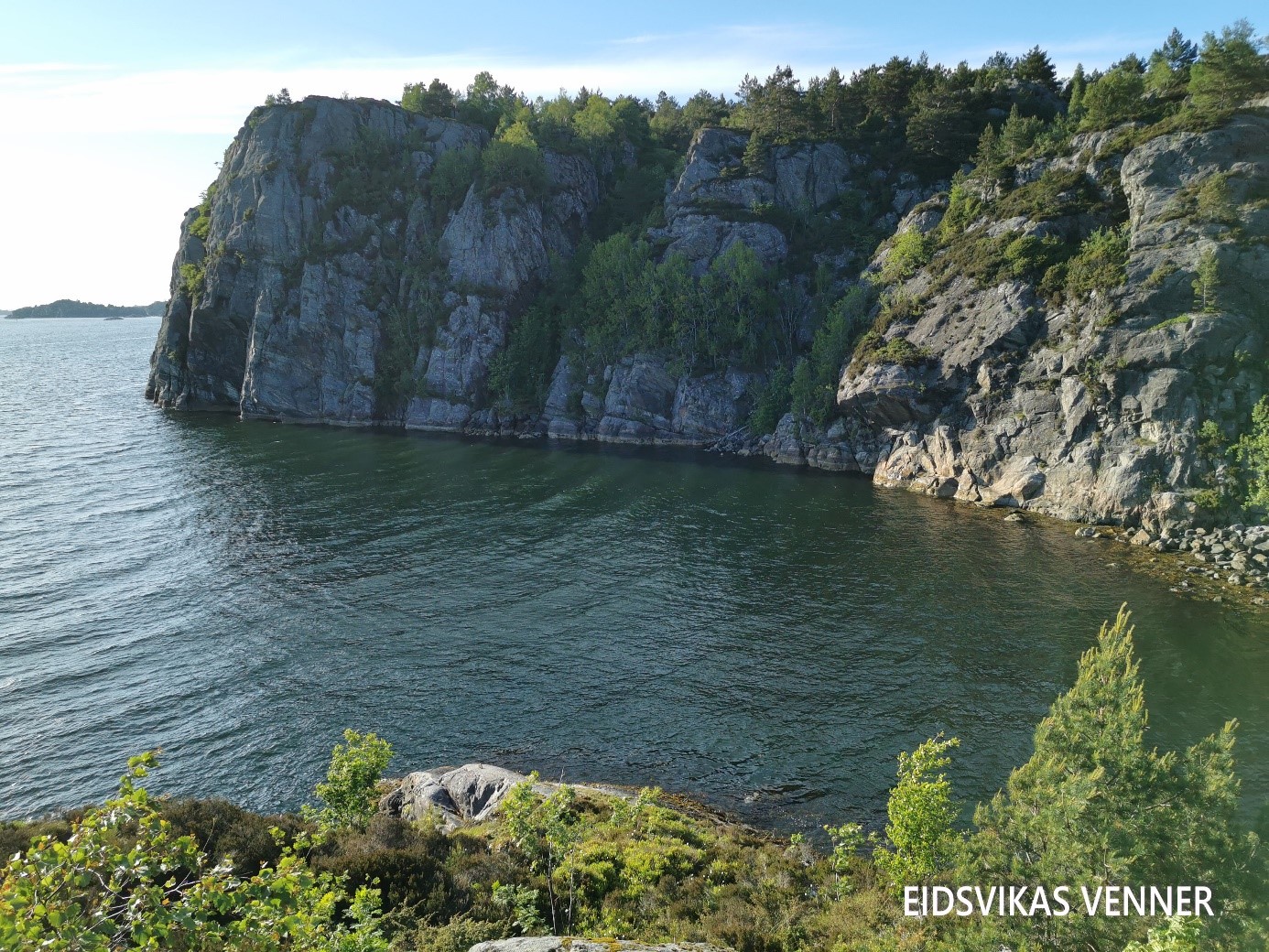Western Norwegian coastal mountains
A beautiful mountain landscape with internationally recognised value.
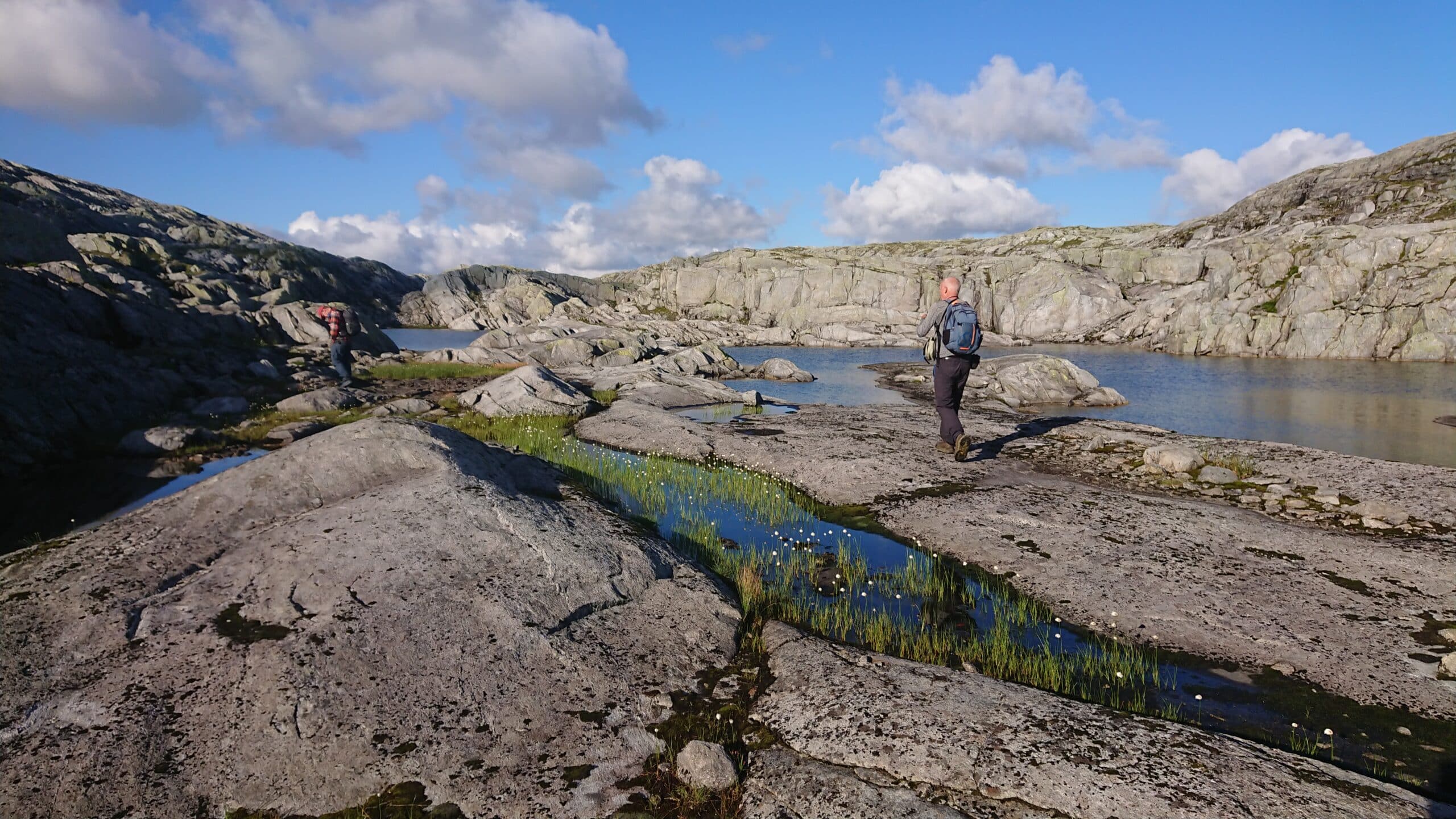 Torbjørn Høitomt
Torbjørn HøitomtMountainous areas cover a large part of the Western Norwegian landscape. The value of the experiences found there is indisputable and the mountains are constantly visited both by locals and tourists. People from all over the world come to witness the lush coastal landscape. During spring and early summer the green hills stand in stark contrast to the white mountains, and this snow is central to the story of the mountains and all the species that live here. Even though the terrain is rough and the snow dominates, it has a lot more to offer than just wild reindeer and mountain grouse.
Precipitation and wind
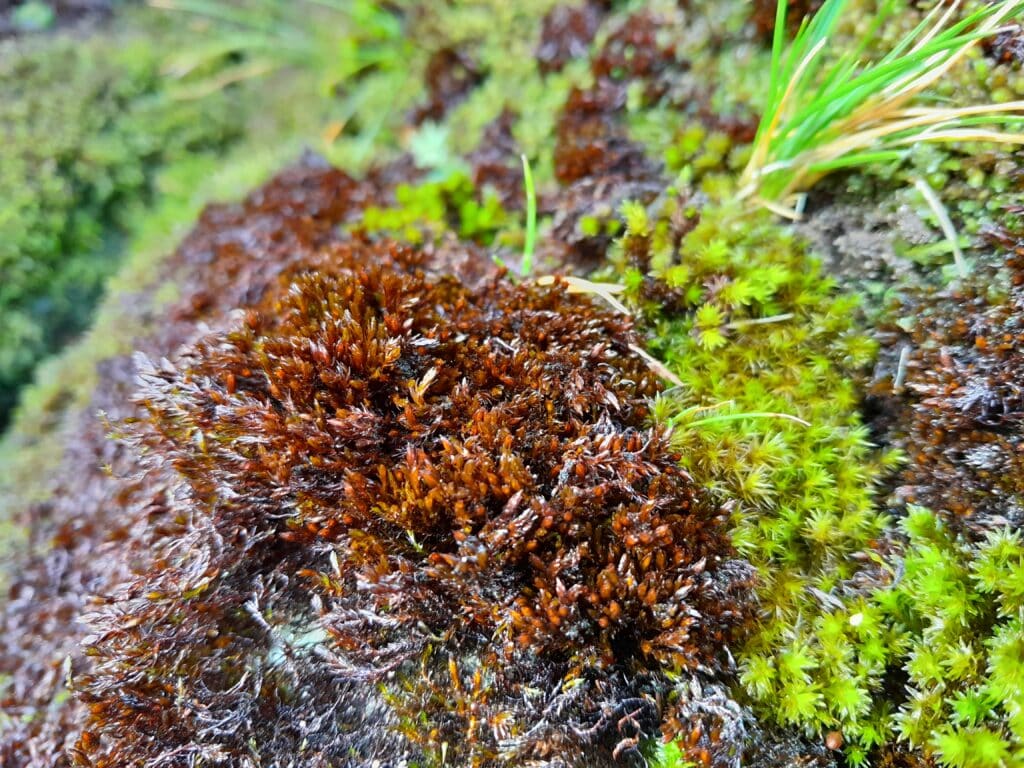 Torbjørn Høitomt
Torbjørn HøitomtThat there is a lot of precipitation in Western Norway might not be necessary to mention. Some places in the fjords there is an average of 3000 mm precipitation annually. Few other places in Europe can beat that. Norway’s location far to the north ensures that much of this precipitation falls as snow, especially in mountain areas. The snow more or less covers some of these mountains from 9-10 months of the year. Through a long winter with wind and snow the snow disperses unevenly across the landscape. From almost barren exposed ridges with barely any snow, to mighty snowbeds in dips and other areas shielded from the wind.
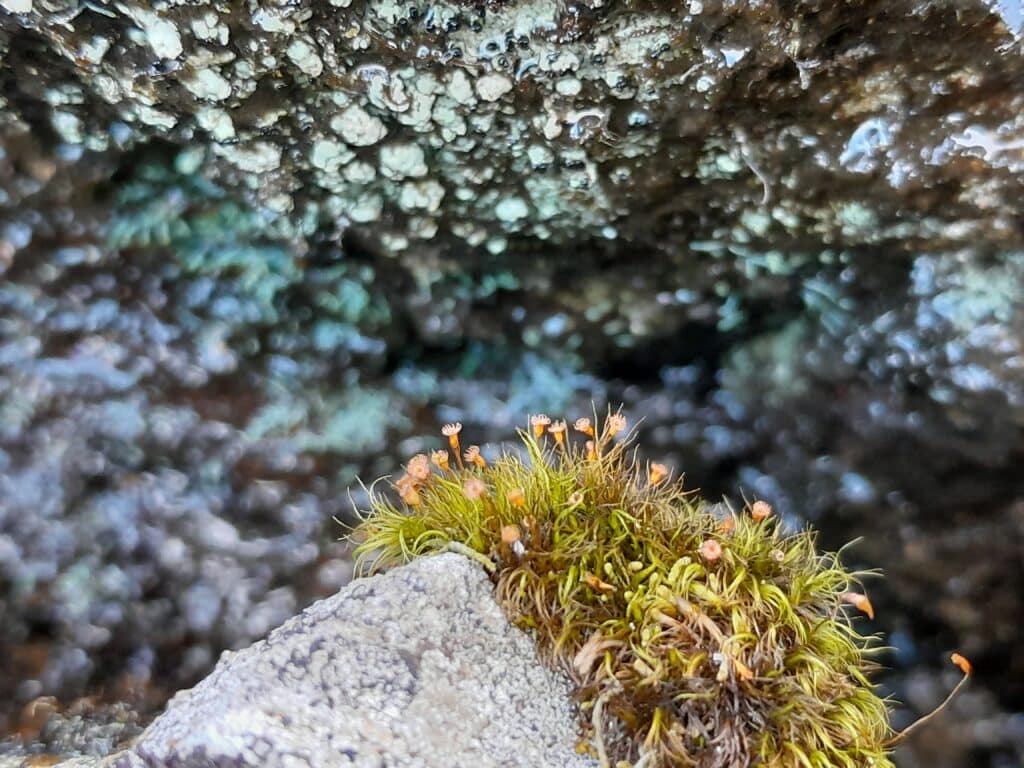 Torbjørn Tøitomt
Torbjørn TøitomtThe vital snow
The snow means “everything” to the species in the mountains. Plant communities are built around the duration of snow cover. On the exposed ridges everything that pokes out from the thin ice sheet is freeze dried by the cold dry wind, but in the summer the snow melts early and leaves a long growing season. In the snowbed however, plants and other species are protected from the elements and the worst cold almost as by a thick snow blanket, but when the snow doesn’t melt until August there’s little time to grow and reproduce once they finally see the sun. Or should we say, if they see the sun? Because rainy days are frequent in the warm season, and clouds often block out the sun rays. The species that have made their home in the wet Western Norwegian mountains have adapted to a life surrounded by snow and water. In most Norwegian mountain areas snowbeds appear almost as distinct spots where the snow lies deep, while in tall mountains near the coast in Western Norway the snowbeds are dominant.The extreme weather ensures that the snowbeds are almost all encompassing, especially places higher than 900-1000 meters above sea level. Other mountain vegetation is delegated to a subordinate role.
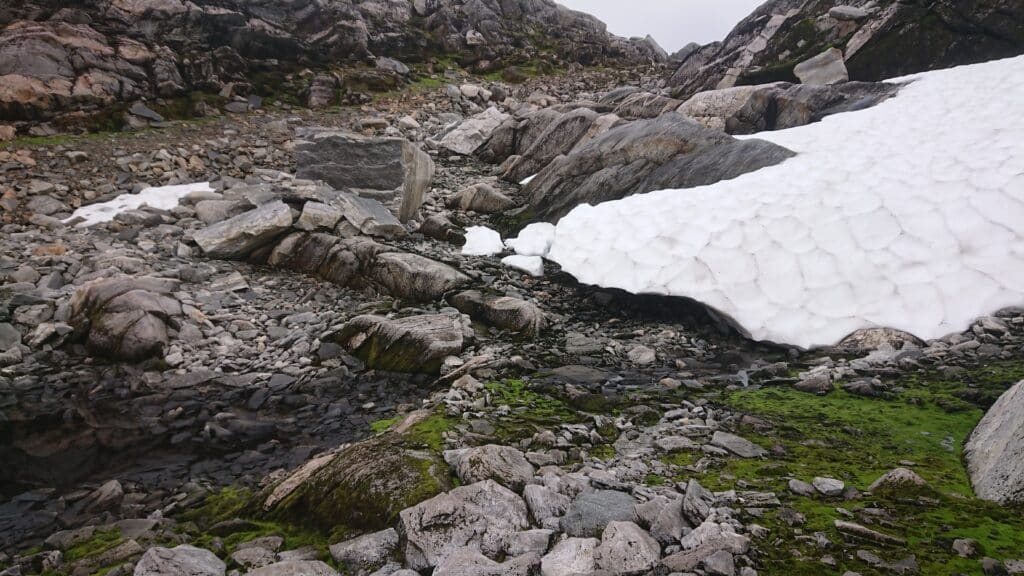 Torbjørn Høitomt
Torbjørn HøitomtSnow and frost
One group of species that thrive under cold and wet conditions is mosses. They are evolutionary primitive and are considered to be our first land plants. They have no roots, many species instead adapting to grow directly on rock or soil. When hunting for moss high in the Norwegian mountains you can find mosses with names that reference their natural environment, often involving words like snow, frost, and ice.
International responsibility
The moss flora in the Western Norwegian mountains is relatively unknown, but in the last few years some important gaps in our knowledge have been filled in. Thorough surveys of mountain areas from Hjelmedal in the south, via Stølsheimen and Masfjordfjella and north to Høyanger. These surveys have uncovered large populations of several species who have a significant amount of its population in these mountains. For some species this area is actually its most important habitat in the world. This means that little Norway has a big international responsibility to ensure that these species are taken care of.
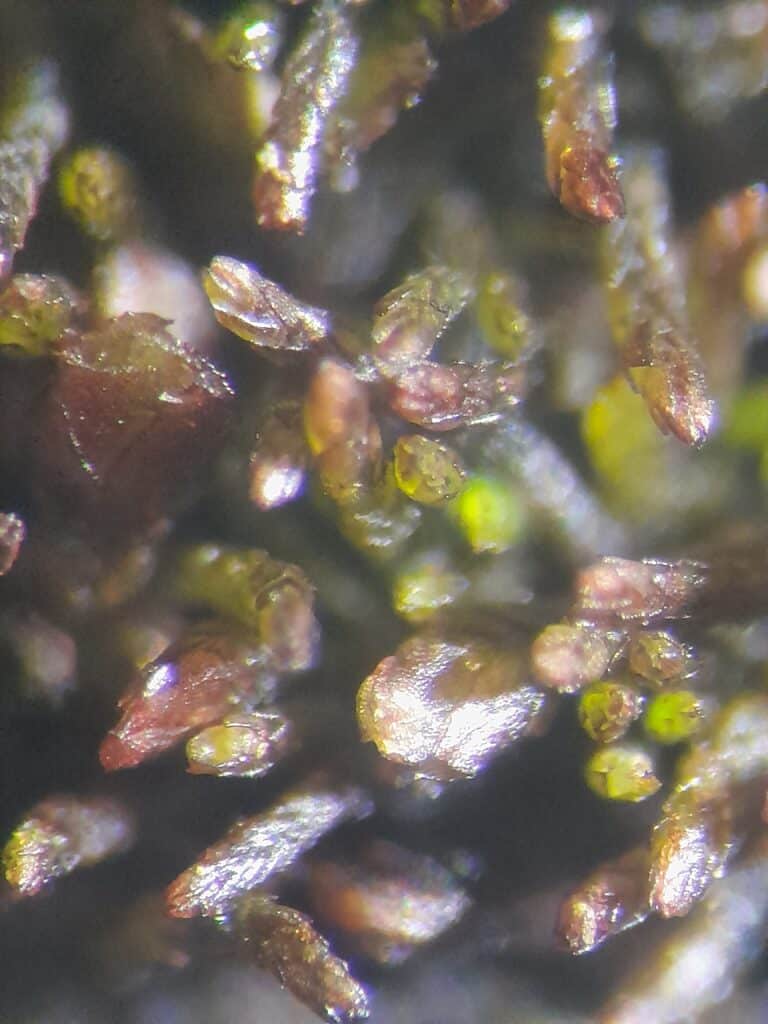 Torbjørn Høitomt
Torbjørn HøitomtJust recently in 2023 two species of moss were discovered in Masfjordfjella that had never been seen in Norway before. For one of these, the liverwort Marsupella stableri, this was the first time it was found in mainland Europe. Previously it was only known from the British Isles.
A lot of Western Norwegian nature has been surveyed in terms of biodiversity in the last few years, but these barren and snowy mountains have largely gone under the radar. From here on out this nature must be prioritised and its mapping status must be elevated on the level of other international responsibility types such as rainforests and stream gorges.
Dark clouds on the horizon
We still have large areas of intact mountain nature both in western Norway and the rest of the country. True, species like wild reindeer that require vast ranges are threatened by fragmentation of their living areas and ever increasing traffic. For small mosses in the snowbed, however, it can seem like summer and winter relieve each other in perpetuity.
But there are dark clouds on the horizon. While Norwegian politicians think that oil and gas industries should be developed, not discontinued, our mountain ranges are threatened by increasing temperatures. The amount of precipitation falling as snow will gradually decline, and snowbeds will melt earlier in the year. Species from lower altitude regions crawl upwards and outcompete the specialised mountain species.
The snowbeds will likely be hit especially hard by drying out. Then the species that live there will be replaced by more generalised mountain heath species. On top of climate challenges there are plans for wind industry, power lines, and gondola lifts in these areas. This seizes land, fragmentation remaining nature, and increases traffic into vulnerable and valuable areas.
Dangerous fragmentation
When intact nature is split up, this is called fragmentation. Fragmentation of mountain landscapes occurs due to direct interventions such as building cabins and new roads, but also when climate change pushes the tree line higher, so that in the long term forests take over more and more of the mountains.
Forests also act as a barrier between remaining mountain areas. When species are isolated on these “islands” in the landscape, they become extra vulnerable to human made or natural changes, for example because spread between living areas is limited. Additionally, roads and other thoroughfares become potential “fast tracks” for lowland species to travel higher up.
Get impressed!
Summer is only a few months away. I recommend everyone take a trip and take in the natural beauty of our mountains. In the areas around Skavlabu in Stølsheimes the landscape really comes into its own. And even if you can’t recognise many of the species you come across, you can still enjoy the feeling of experiencing nature that exists hardly anywhere else in the world. But walk carefully, you’re in the home of the mountain grouse, the cottongrass, the dwarf willow, and last but not least, many, many mosses.
About the mapping projects
Torbjørn Høitomt is an employee of Biofokus, and is an ecologist and moss specialist. In 2022 and 2023, he has worked with his colleagues to map the nature in several mountain areas in Western Norway, All of these projects have contributed to new and sorely needed knowledge about this specific type of thature. The projects are financed by Artsdatabankens Artsprosjekt, Statsforvalteren i Vestland, Forum for natur og friluftsliv i Hordaland, Motvind Sunnfjord, and Ytre Sogn og Statnett.
Text and photo: Torbjørn Høitomt
News in English
Thanks to our volunteers, we have a number of articles in English.

